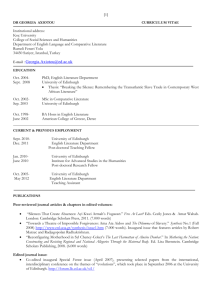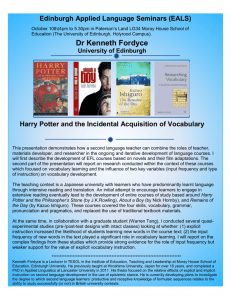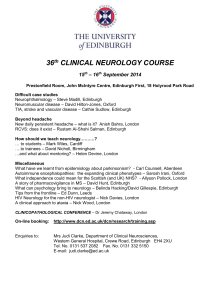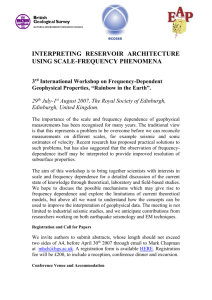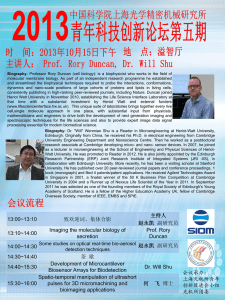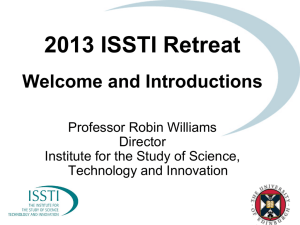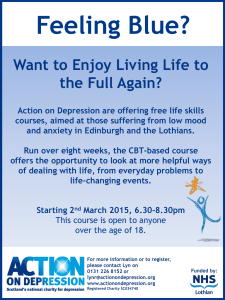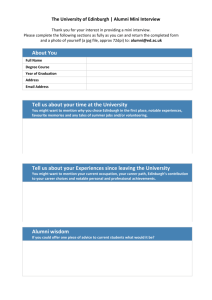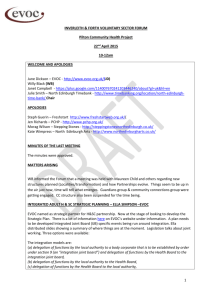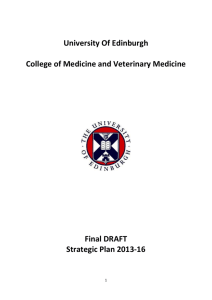Now - The City of Edinburgh Council
advertisement
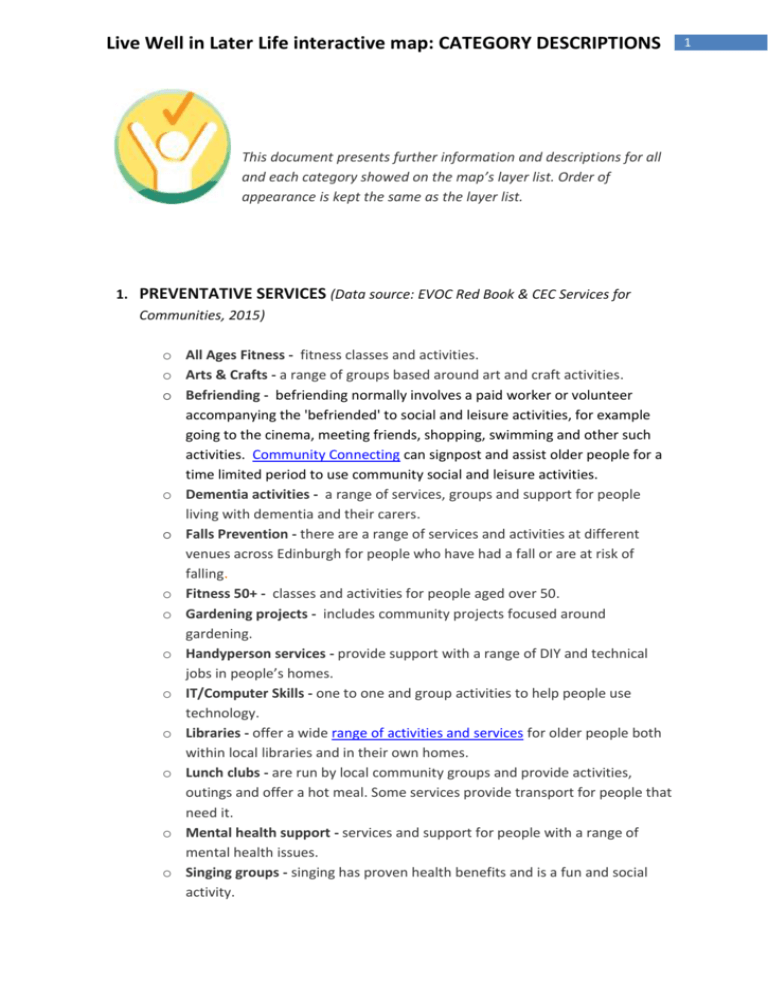
Live Well in Later Life interactive map: CATEGORY DESCRIPTIONS This document presents further information and descriptions for all and each category showed on the map’s layer list. Order of appearance is kept the same as the layer list. 1. PREVENTATIVE SERVICES (Data source: EVOC Red Book & CEC Services for Communities, 2015) o All Ages Fitness - fitness classes and activities. o Arts & Crafts - a range of groups based around art and craft activities. o Befriending - befriending normally involves a paid worker or volunteer accompanying the 'befriended' to social and leisure activities, for example going to the cinema, meeting friends, shopping, swimming and other such activities. Community Connecting can signpost and assist older people for a time limited period to use community social and leisure activities. o Dementia activities - a range of services, groups and support for people living with dementia and their carers. o Falls Prevention - there are a range of services and activities at different venues across Edinburgh for people who have had a fall or are at risk of falling. o Fitness 50+ - classes and activities for people aged over 50. o Gardening projects - includes community projects focused around gardening. o Handyperson services - provide support with a range of DIY and technical jobs in people’s homes. o IT/Computer Skills - one to one and group activities to help people use technology. o Libraries - offer a wide range of activities and services for older people both within local libraries and in their own homes. o Lunch clubs - are run by local community groups and provide activities, outings and offer a hot meal. Some services provide transport for people that need it. o Mental health support - services and support for people with a range of mental health issues. o Singing groups - singing has proven health benefits and is a fun and social activity. 1 Live Well in Later Life interactive map: CATEGORY DESCRIPTIONS o Social Groups - includes a wide range of groups and activities o Green & Open Spaces - Include allotments, bowling greens, churchyards, golf courses, green corridors, semi-natural green spaces, playing fields, public parks & gardens and semi-natural parks. 2. HEALTH (Data source: NHS data gathered in 2010 - 2015) o General Practices (GPs) – general practice surgeries across the city are often the first contact for health issues. o Dentists – provide dental treatment. o Optometrists - primary health care specialists trained to examine the eyes to detect defects in vision, signs of injury, ocular diseases or abnormality and problems with general health. o Pharmacies – pharmacies include independent and NHS services which dispense medication and give advice. o In-patient Complex Care - NHS services formally known as Continuing Care, for people assessed as eligible for complex, specialist and intensive health care that can only be met through this form of 24 hour care. o Day Hospitals – people attend day hospitals for treatment, assessment and rehabilitation during the day. o Hospitals – includes hospitals with emergency departments and post-acute hospitals, where people can provide receive further medical treatment and rehabilitation. o Other NHS sites – includes specialist facilities such as sexual health clinic and eye pavilion. 3. DAY SERVICES (Data source: Health and Social Care, City of Edinburgh Council 2015) o Day services - can help older people keep active, meet others, take part in activities and provide a break for unpaid carers. o City of Edinburgh Council Day Services - owned and managed by the City of Edinburgh Council . The services are registered with, and regulated by, the Care Inspectorate and provide transport for people that need it. o Registered Day Services - are provided by voluntary organisations registered with, and regulated by, the Care Inspectorate. This means the service can support people with higher levels of care needs, including personal care. The services receive funding from the City of Edinburgh Council and provide transport for people that need it. 2 Live Well in Later Life interactive map: CATEGORY DESCRIPTIONS o Unregistered - day services are provided by voluntary organisations that are not registered with the Care Inspectorate, so personal care is not provided, but a similar range of activities as other day services. Many of the services provide transport for people that need it. o BME day services – specialist day services for older people from black and minority ethnic communities. This includes both registered and unregistered services. o Catchment areas – this shows the areas where transport is provided for the City of Edinburgh Council and registered day services. This is a guide only as the transport changes based on service user needs and availability of services. 4. ACCOMMODATION. (Data source: Health and Social Care, City of Edinburgh Council, 2015 for care homes, 2013 sheltered housing) o Care Homes - provide 24 hour care. Residential care homes have trained staff and a community nurse can visit when needed. Nursing care homes have trained staff including nurses. o Sheltered housing - gives you support and security without taking away your independence. Sheltered Housing is available from the Council and some Housing Associations, and is generally one bedroom properties. 5. BOUNDARIES (Date source: City of Edinburgh Council, 2015) o Wards - the Council’s 17 administrative boundaries, each ward has 3 or 4 Councillors. o Health and Social Care current sectors - represent the current four health and social care practice team sector boundary areas, also used by other services including LOOPs. This will be replaced by the new locality boundaries from April 2016. o Locality boundaries - the four new locality areas agreed by the Edinburgh Partnership, to be implemented across health and social care services by April 2016 o Natural Neighbourhoods - Natural neighbourhoods are areas that have an identity meaningful to residents. 154 natural neighbourhoods were agreed in September 2014 following a public consultation. o Neighbourhood partnerships - 12 Neighbourhood Partnership areas. 3 Live Well in Later Life interactive map: CATEGORY DESCRIPTIONS 6. ELDERLY BACKGROUND POPULATION (Data source: Census 2011) Data based on census ‘output areas’(the smallest geographical unit for which Census data is released. Constructed by aggregating together a small number of postcodes).The resulting density maps show the number of people who live within an 800 metre radius of each and every point of the City. o Age 65+, 75+, 85+: Age is derived from the date of birth question and is a person’s age on 27th March 2011. More info o Long-Term illness, health problem or disability: A long-term health problem or disability that limits a person’s day-to-day activity, and has lasted, or is expected to last, at least 12 months. This includes problems that are related to old age. More info o Unpaid Carers: A person is provider of unpaid care if they look after or give help or support to family members, friends, neighbours because of long-term physical or mental ill health or disability, or problems related to old age. This does not include any activities as part of paid employment. More info o Bad Health: General health is a self-assessment of a person’s general state of health. People were asked to assess whether their health was very good, good, fair, bad or very bad. More info o Dementia: Figures show estimates. EuroCode Ratio applied over the total of population over 65 years old by gender. EuroCoDe Prevalence (%) Age Range 65-69 70-74 75-79 80-84 85-89 90-94 95-99 100+ Male 1.8 3.2 7.0 14.5 20.9 29.2 32.4 32.4 Female 1.4 3.8 7.6 16.4 28.5 44.4 48.8 48.8 Total 1.6 3.5 7.4 15.7 26.2 41.0 46.3 46.3 4
